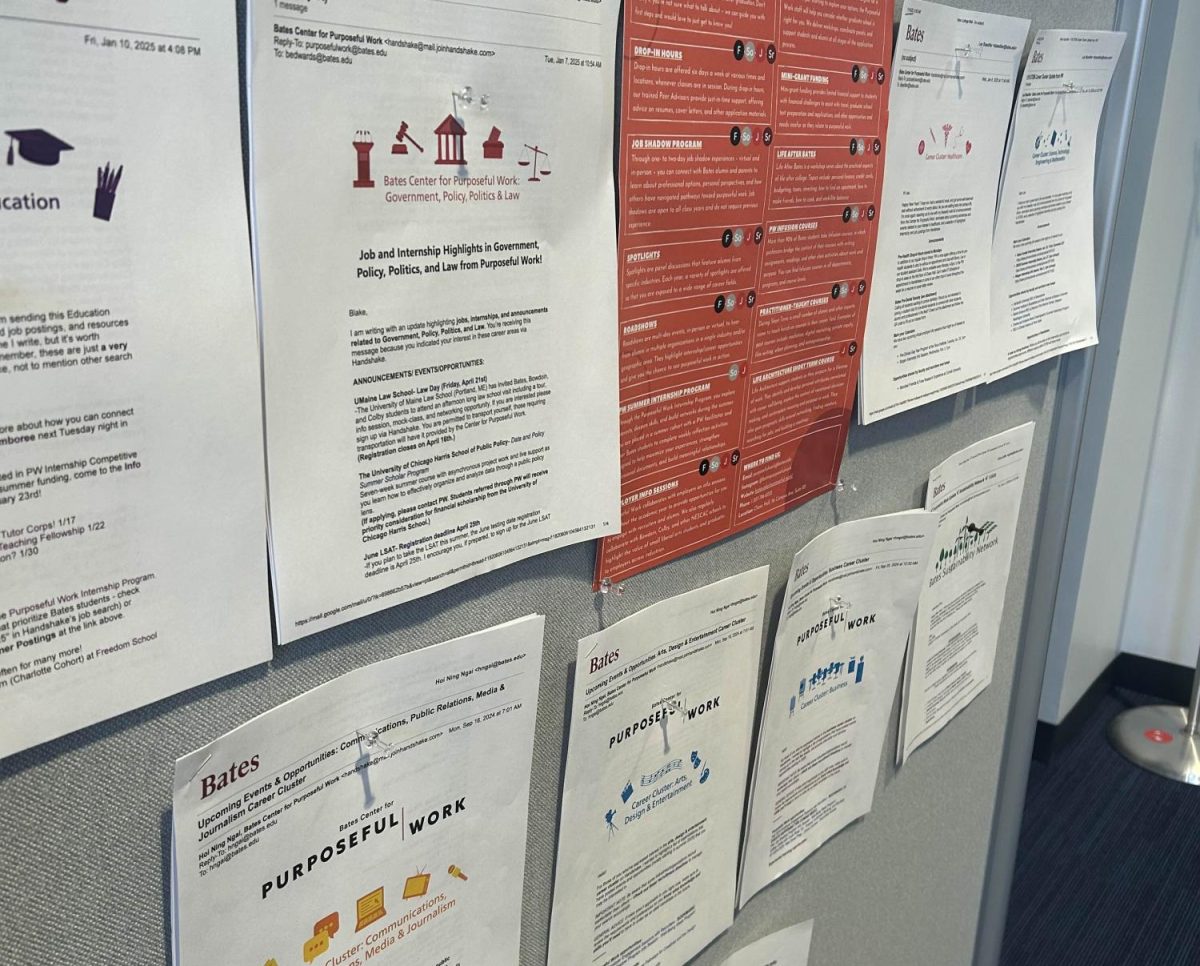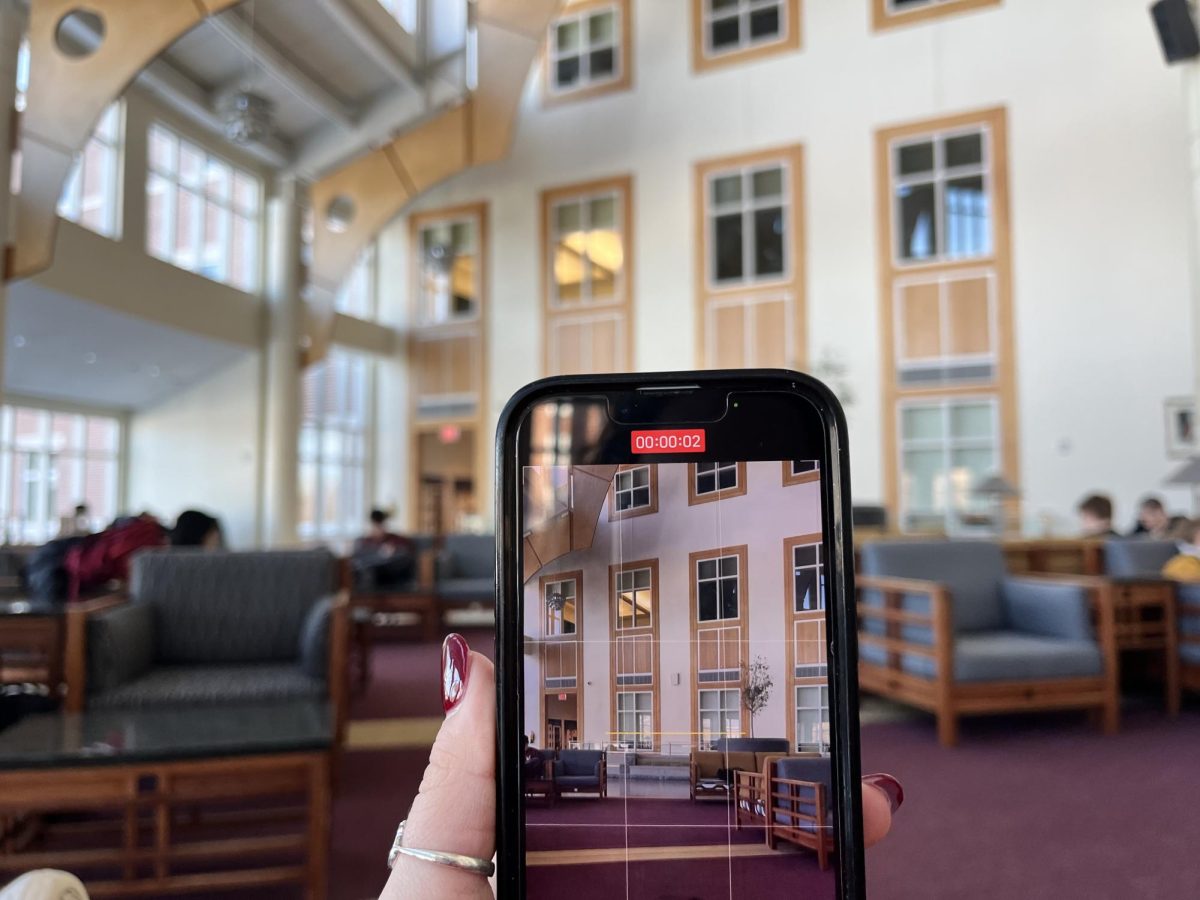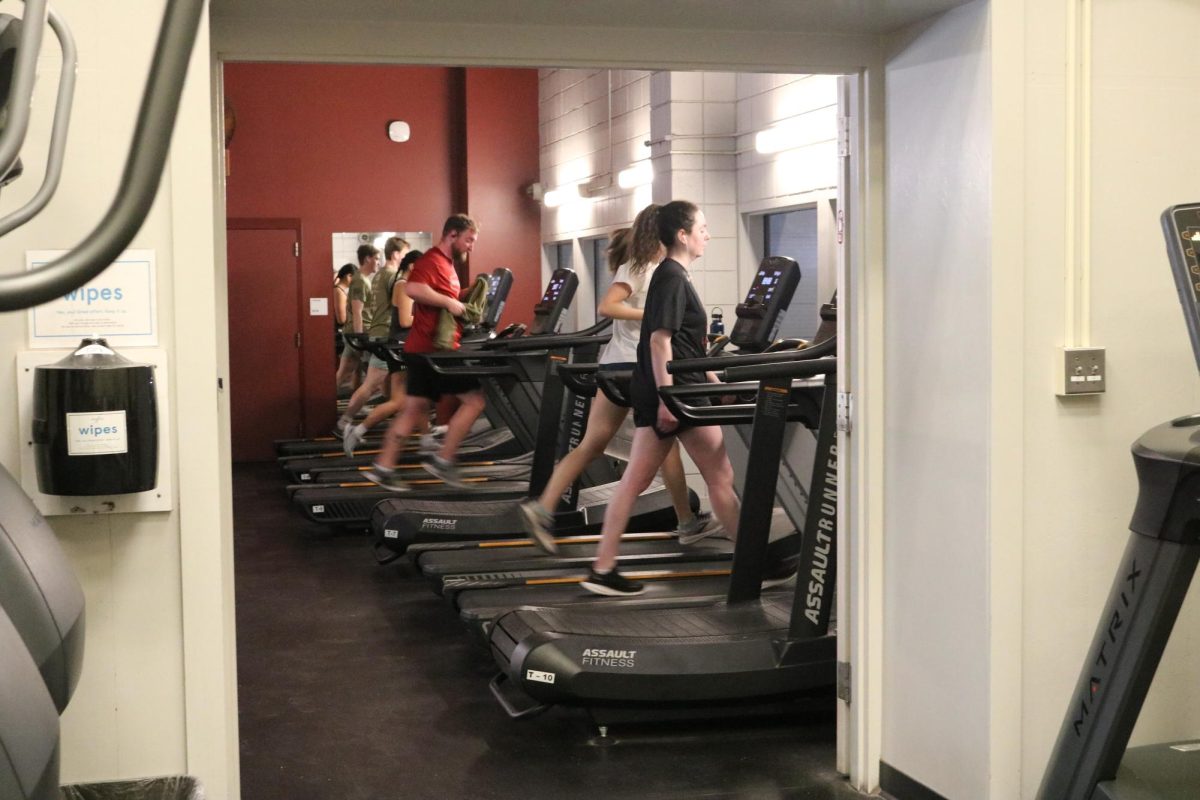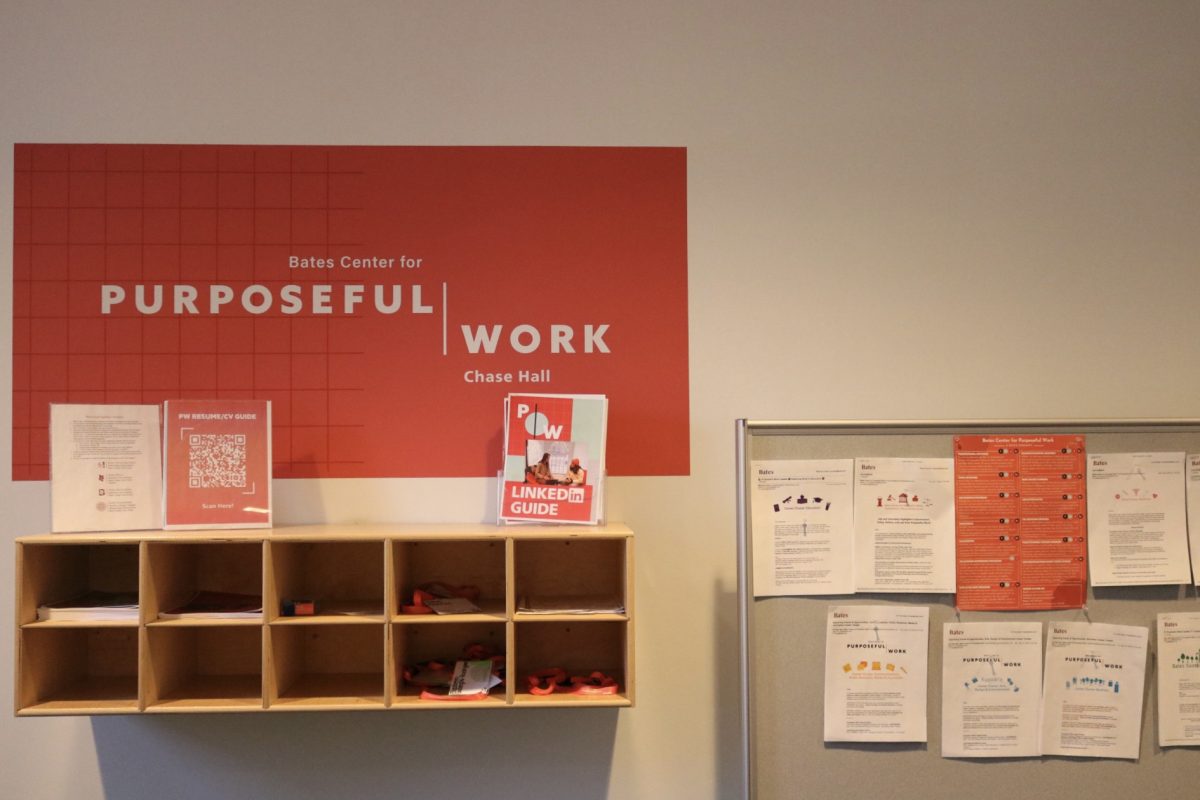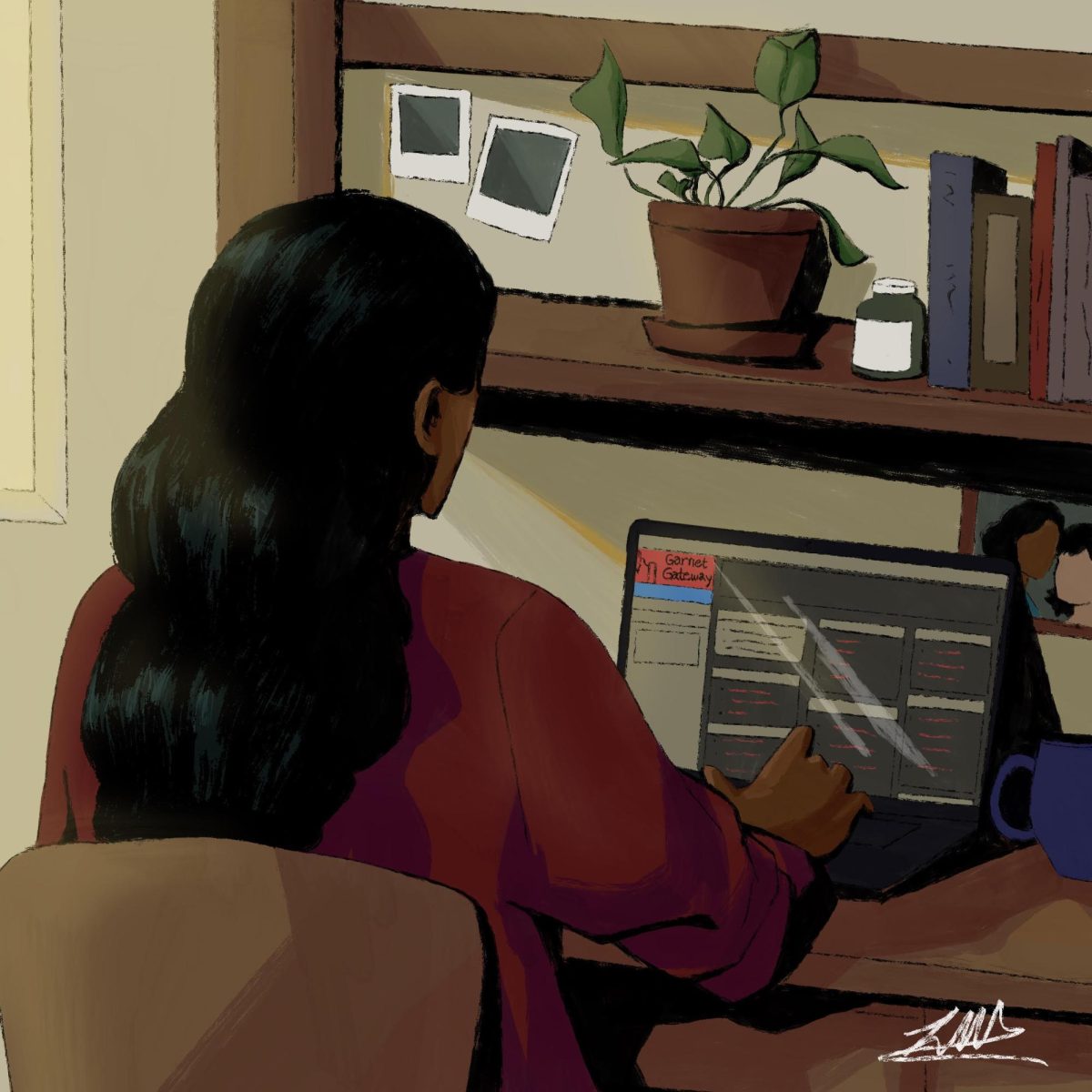When I received the email that classes were cancelled, I was sitting in my 9:30 Anthropology class, listening to Loring Danforth explain the significance of Western Apache jokes. When the email was released, no matter how hard I tried to appreciate my last class lecture, I couldn’t ignore the ball of fury in my stomach, the loss of my year, and the feeling that a virus that I knew little about was suddenly evicting me from my life.
Danforth tried to keep teaching, and the longer he talked, the more I knew that this wasn’t a Western Apache joke. I kept refreshing my mailbox. I kept praying to the Bates gods for this to be some type of sick mistake, but it was real. People were scared. The new styrofoam cereal bowls were too small. And then, at the end of it, we were left with extreme disappointment and extreme amounts of non-sustainability in Commons dining utensils.
Soon enough, our dorms were packed up, our tickets home were purchased, and our minifridges were left to thaw in the nearby storage units. Separation came next. Some goodbyes were too hard. Some were too quick. In three days I was alone in my basement, mindlessly binge watching Netflix, numbing the pain by eating leftover granola bars from my dorm.
So now, let’s face it. Self-isolation sucks. It’s not breaking news. Boredom haunts me. I’ve been running from it for only a week now, and the running has turned me into a caged animal. I’m sure I’m not the only one feeling like a hamster on a spinning wheel–and for some of us, that spinning wheel might be the treadmill in our garage, since we can’t go workout in public spaces anymore.
I’ve desperately wanted to turn this time into an advantage, a ground-in you might say, an opportunity for self reflection and self improvement. I’ve attempted to journal, to read, to meditate, but to no avail, it’s hard to self improve with a limited amount of fresh air, or social interaction, or general setting variability.
So, what’s the secret? How can we go through the rest of the semester without driving ourselves into a hole of tiktok, discussion forums, and madness?
I believe the answer is a puzzle. Yes, it’s a puzzle. It’s a box full of pieces, jumbled and chaotic, that we must sift through, organize, and piece together.
There is something about puzzles that makes people cling to them when they stripped of everything else. Before this year, the last time I did one was when I was suffering from a severe head injury and had lost the very ability to think and live normally. I also know puzzles are common in nursing homes to foster the brains of Alzheimer’s patients.
Therefore, it seems as if this is as good a time as any. We are without access to our lives, just like I was once kept from my own thoughts, and Alzheimer’s patients are without their memories. We are experiencing a headache, missing out on memories that could have been made, and the only thing that seems to bring me peace is to take out the puzzle and somehow figure it out.
It’s become a way to cope, to sift, to organize, and put together my thoughts, one piece at a time. The beauty is in the way it’s accomplished–the mindless method, the use of the brain in a rhythmic, simultaneously complicated and uncomplicated way.
We must look first to understand and feel first to accomplish, for no puzzle is completed blind, and no piece fits on the first try. We must find our edges, our corners, our boundaries,
because without them we do not know where our picture ends and begins. Lastly, we must have patience and persistence to see this picture through. We must stay in one place, and not move too harshly, for moving a puzzle is nearly impossible unless it has something solid to lay on.
Something is found when the picture is completed. COVID-19 has separated us, turned us into pieces, and now, I ask, what is the picture that these pieces will create? Perhaps, at the end, we will see the picture on the box we’ve been striving for–a better world, a more aware world, a population that has more gratitude for the people they could not see, the classes they could not take, and the freedom they could not embark.
Perhaps, one piece at a time, we will look at the completed puzzle, and be proud of the persistence it took to finish this picture.


